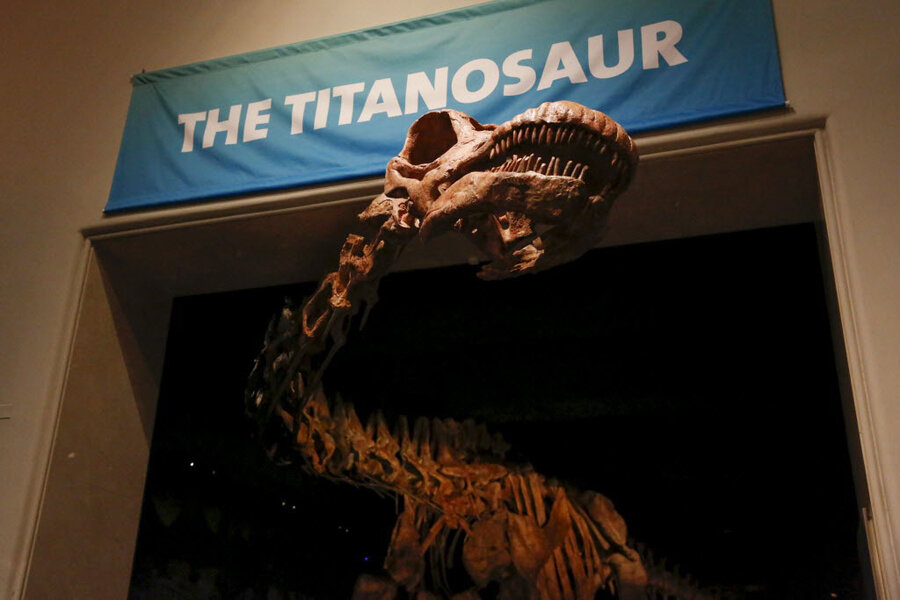This humongous titanosaur could be the biggest dinosaur that ever lived
Loading...
Something big is coming to New York. A recently-discovered dinosaur skeleton will be unveiled at New York’s American Museum of Natural History Friday.
This fossil is so newly discovered that it does not yet have a formal name, although scientists have determined that it belonged to a group of dinosaurs called titanosaurs.
The 122-foot-long creature was certainly a Titan of the dinosaur kingdom. The skeleton is so large that it barely fits into the museum's massive fossil hall, which features 19-foot-high ceilings. In fact, the fossil’s head and neck don’t fit at all, and instead poke out towards the elevators. Visitors arriving on the museum's fourth floor will be in for a surprise.
Paleontologists say that the titanosaur roamed the Earth about 100 million years ago. It was an herbivore that weighed approximately 70 tons. For all that heft, the titanosaur could be heavier still, were it not for its unusually light bones.
The titanosaur’s bones were what scientists call cancellous, meaning that they contain many, tiny air pockets. “The bones themselves would be very, very light. That’s the only way an animal like this could get so big,” according to museum curator Mark Norell.
While this particular titanosaur was discovered in Patagonia, museum official Michael Novacek told Reuters, "Titanosaur fossils have been unearthed on every continent, and an abundance of discoveries in recent years has helped us appreciate the deep diversity of this group.”
“The last 20 years have really been the new golden age of dinosaur discovery. New kinds of animals have been found all over the world in Africa, Asia, and Patagonia. This is just one of the latest ones,” says Mr. Norell.
Norell’s former student, Diego Pol, called him one day and told him that a farmer in Patagonia had discovered something amazing. Mr. Pol and fellow scientist José Luis Carballido led a team of paleontologists from the Museum of Paleontology Egidio Feruglio to an Argentinian desert, where they painstakingly extracted the dinosaur over a span of several years.
After the dinosaur’s bones had been fully excavated from the rocks, a team from the American Museum went to Argentina and digitized the skeleton. It took them four weeks to scan every bone.
The dinosaur on display in New York is actually a fiberglass casting. The museum used the 3D scans it took in Argentina to painstakingly reproduce the original bones in durable fiberglass. One of the titanosaur’s original bones, a fossilized femur, will also be on view at the museum for several weeks.
The museum features several other famous exhibits, including a massive blue whale and a T-Rex that was featured in the 2006 movie, Night at the Museum.
This report contains material from Reuters.





